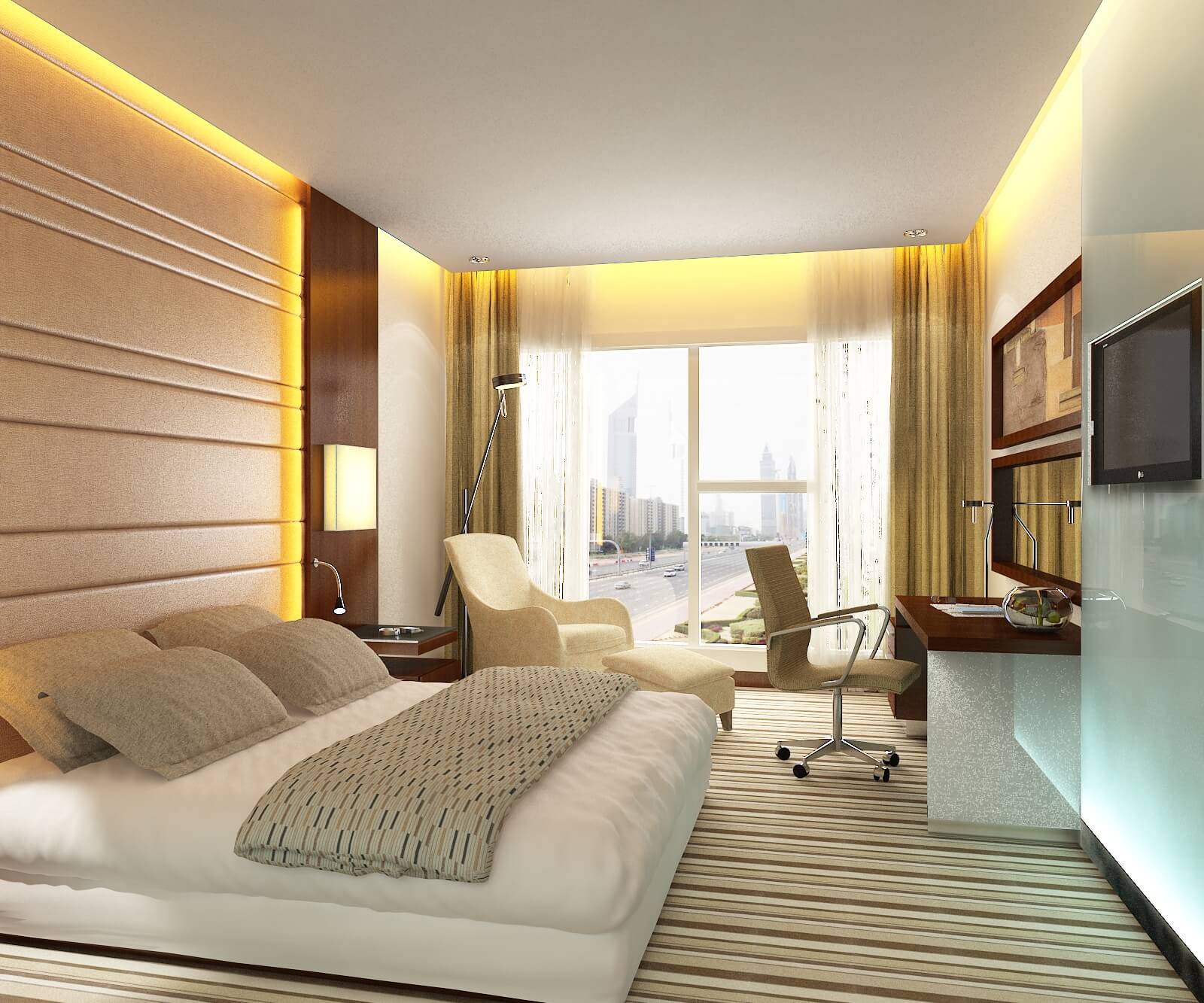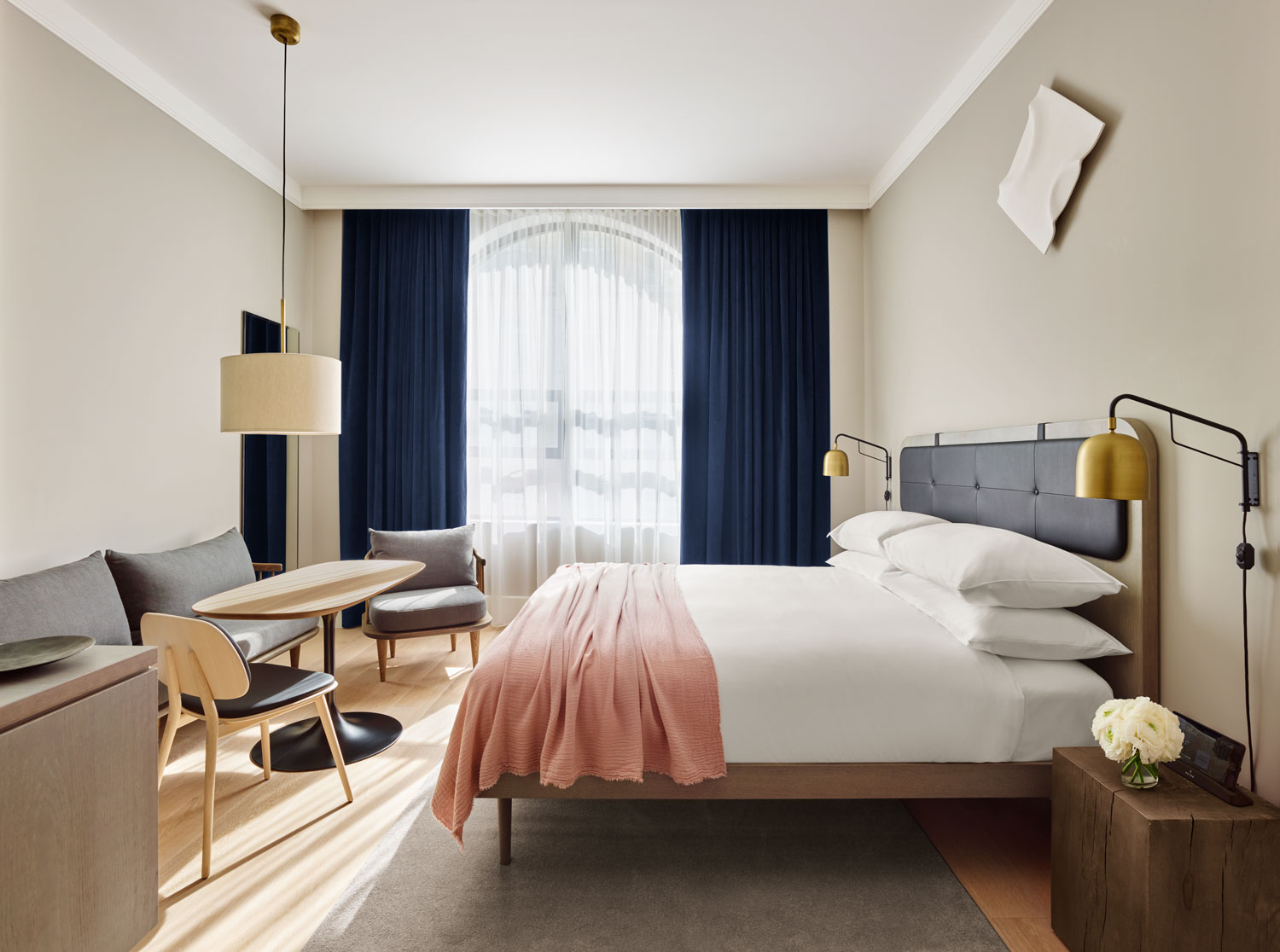Color Schemes

Hotel room interior design – Color plays a crucial role in shaping the ambiance and mood of a hotel room. Different color palettes evoke distinct psychological responses and can significantly impact the guest experience.
Hotel room interior design often aims to create a comfortable and inviting space for guests. One popular style for hotel rooms is RH Interior Design , which incorporates a mix of classic and modern elements. This style often features neutral colors, natural materials, and comfortable furnishings, creating a warm and welcoming atmosphere for guests to relax and unwind in.
Here are some commonly used color schemes in hotel room interior design, along with their psychological effects:
Neutral Hues
- White: Purity, cleanliness, spaciousness
- Beige: Warmth, comfort, relaxation
- Gray: Sophistication, elegance, calming
Neutral hues create a serene and inviting atmosphere, allowing guests to feel at ease and unwind.
Warm Colors
- Red: Excitement, passion, energy
- Orange: Optimism, warmth, creativity
- Yellow: Happiness, cheerfulness, optimism
Warm colors evoke feelings of warmth, coziness, and stimulation, making them suitable for rooms intended for relaxation or entertainment.
The interior design of a hotel room can have a significant impact on the guest experience. A well-designed room can create a sense of comfort and relaxation, while a poorly designed room can be uncomfortable and even stressful. If you are planning to remodel your hotel room, it is important to consult with a certified interior designer.
A certified interior designer will have the knowledge and experience to create a room that is both stylish and functional.
Cool Colors
- Blue: Tranquility, serenity, calmness
- Green: Growth, renewal, balance
- Purple: Luxury, sophistication, royalty
Cool colors create a calming and relaxing atmosphere, promoting rest and rejuvenation.
Effective use of color schemes can enhance the guest experience by creating the desired ambiance and mood. For instance, a hotel room with a neutral color palette and soft lighting can evoke a sense of serenity, while a room with bold colors and vibrant patterns can create an energetic and stimulating atmosphere.
Lighting Design

Lighting plays a pivotal role in creating a comfortable and inviting atmosphere in hotel rooms, influencing the overall guest experience. It can set the mood, enhance functionality, and contribute to a sense of well-being.
To achieve optimal illumination and ambiance, various types of lighting fixtures are employed, each serving a specific purpose. These include:
Types of Lighting Fixtures
- Ambient lighting: Provides general illumination throughout the room, creating a sense of spaciousness and reducing shadows. Examples include ceiling-mounted fixtures, chandeliers, and wall-mounted sconces.
- Task lighting: Focuses on specific areas where guests require additional illumination for activities such as reading, working, or applying makeup. Examples include desk lamps, bedside lamps, and under-cabinet lighting.
- Accent lighting: Highlights architectural features, artwork, or decorative elements to create visual interest and add depth to the room. Examples include recessed lighting, track lighting, and picture lights.
Innovative Lighting Solutions
Innovative lighting solutions in hotel rooms go beyond traditional fixtures to enhance the guest experience. These include:
- Smart lighting systems: Allow guests to control lighting from their smartphones or tablets, adjusting brightness, color temperature, and creating customized lighting scenes.
- Motion-activated lighting: Automatically turns on or adjusts lighting when motion is detected, providing convenience and energy efficiency.
- Natural light integration: Maximizes the use of natural light through large windows, skylights, and balconies, reducing energy consumption and creating a connection with the outdoors.
Furniture Selection: Hotel Room Interior Design

Furniture selection in hotel rooms is a crucial aspect of creating a comfortable, functional, and aesthetically pleasing space. When choosing furniture, hoteliers should consider the following key factors:
Comfort: Guests should feel at ease and relaxed in their hotel room. Furniture should provide ample support and cushioning, with comfortable upholstery and ergonomic design. The bed is the most important piece of furniture, so it’s essential to invest in a high-quality mattress and bedding.
Space Optimization, Hotel room interior design
Hotel rooms are often limited in space, so it’s important to select furniture that optimizes the available area. Multi-functional pieces, such as ottomans with built-in storage or sofa beds, can save space while providing additional functionality. Wall-mounted shelves and floating nightstands can also help to create a more spacious feel.
Cohesive Flow
The furniture in a hotel room should create a cohesive flow that allows guests to move around easily and comfortably. The arrangement of furniture should be balanced and symmetrical, with clear pathways between different areas of the room. Avoid overcrowding the space with too much furniture, as this can make the room feel cramped and uncomfortable.
Furniture Trends
The latest furniture trends in hotel room interior design include a focus on sustainability and smart technology. Sustainable furniture is made from eco-friendly materials and is designed to minimize environmental impact. Smart furniture, such as beds with built-in charging stations or mirrors with integrated voice assistants, offers guests added convenience and functionality.